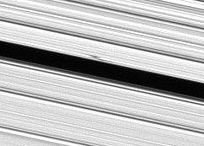Moonlet on:
[Wikipedia]
[Google]
[Amazon]


 A moonlet, minor moon, minor natural satellite, or minor satellite is a particularly small
A moonlet, minor moon, minor natural satellite, or minor satellite is a particularly small
Google Book Search for "moonlet"
{{Moons of Saturn, state=uncollapsed


 A moonlet, minor moon, minor natural satellite, or minor satellite is a particularly small
A moonlet, minor moon, minor natural satellite, or minor satellite is a particularly small natural satellite
A natural satellite is, in the most common usage, an astronomical body that orbits a planet, dwarf planet, or small Solar System body (or sometimes another natural satellite). Natural satellites are colloquially referred to as moons, a deriv ...
orbiting a planet
A planet is a large, Hydrostatic equilibrium, rounded Astronomical object, astronomical body that is generally required to be in orbit around a star, stellar remnant, or brown dwarf, and is not one itself. The Solar System has eight planets b ...
, dwarf planet
A dwarf planet is a small planetary-mass object that is in direct orbit around the Sun, massive enough to be hydrostatic equilibrium, gravitationally rounded, but insufficient to achieve clearing the neighbourhood, orbital dominance like the ...
, or other minor planet
According to the International Astronomical Union (IAU), a minor planet is an astronomical object in direct orbit around the Sun that is exclusively classified as neither a planet nor a comet. Before 2006, the IAU officially used the term ''minor ...
.
Up until 1995, moonlets were only hypothetical components of Saturn's F-ring structure, but in that year, the Earth passed through Saturn's ring plane. The Hubble Space Telescope
The Hubble Space Telescope (HST or Hubble) is a space telescope that was launched into low Earth orbit in 1990 and remains in operation. It was not the Orbiting Solar Observatory, first space telescope, but it is one of the largest and most ...
and the European Southern Observatory
The European Organisation for Astronomical Research in the Southern Hemisphere, commonly referred to as the European Southern Observatory (ESO), is an intergovernmental organization, intergovernmental research organisation made up of 16 m ...
both captured objects orbiting close or near the F-ring. In 2004, Cassini caught an object 4–5 kilometers in diameter on the outer ring of the F-ring and then 5 hours later on the inner F-ring, showing that the object had orbited.
Several different types of small moons have been called moonlets:
* A belt of objects embedded in a planetary ring, especially around Saturn
Saturn is the sixth planet from the Sun and the second largest in the Solar System, after Jupiter. It is a gas giant, with an average radius of about 9 times that of Earth. It has an eighth the average density of Earth, but is over 95 tim ...
, such as those in the A Ring, S/2009 S 1
S/2009 S 1 is a Rings of Saturn#Propeller_moonlets, moonlet embedded in the outer part of Saturn's Rings of Saturn#B Ring, B Ring, orbiting away from the planet. The moonlet was discovered by the Cassini–Huygens, ''Cassini'' Imaging Team durin ...
in the B Ring ( "propeller" moonlets), and those in the F Ring
* Occasionally asteroid moon
A minor-planet moon is an astronomical object that orbits a minor planet as its natural satellite. , there are 457 minor planets known or suspected to have moons. Discoveries of minor-planet moons (and binary objects, in general) are important ...
s, such as those of 87 Sylvia
* Flashes seen near Jupiter
Jupiter is the fifth planet from the Sun and the List of Solar System objects by size, largest in the Solar System. It is a gas giant with a Jupiter mass, mass more than 2.5 times that of all the other planets in the Solar System combined a ...
's moon Amalthea that is likely debris ejected from its surface
* Subsatellite
A subsatellite, also known as a submoon or informally a moonmoon, is a "moon of a moon" or a hypothetical natural satellite that orbits the moon of a planet.
It is inference, inferred from the empirical study of natural satellites in the Solar S ...
s
See also
*Minor-planet moon
A minor-planet moon is an astronomical object that orbits a minor planet as its natural satellite. , there are 457 minor planets known or suspected to have moons. Discoveries of minor-planet moons (and binary objects, in general) are important ...
* Natural satellite
A natural satellite is, in the most common usage, an astronomical body that orbits a planet, dwarf planet, or small Solar System body (or sometimes another natural satellite). Natural satellites are colloquially referred to as moons, a deriv ...
* Ring system
A ring system is a disc or torus orbiting an astronomical object that is composed of solid material such as dust, meteoroids, planetoids, moonlets, or stellar objects.
Ring systems are best known as planetary rings, common components of sate ...
References
Further reading
Google Book Search for "moonlet"
{{Moons of Saturn, state=uncollapsed
Links List of moonlets
Asteroid satellites
Moons of Saturn
Moons